A very large and rare pewter dish from the second half of the 16th century, bearing a rich decoration typical of the Renaissance: interlacing patterns, floral motifs, mascarons, grotesques, etc., arranged in a circular frieze, repeating the same elements.
I have not found a model with a similar decoration in my research. Thank you for any help you can provide in identifying this model, which is surely known, or for any reference you may have regarding this lovely example of tableware.
Three main sections can be distinguished: the rim, the basin, and the projecting central cabochon, using the shape of Renaissance dishes designed to hold and secure the foot of a ewer.
Condition:
The pewter is affected by a condition known as "tin scab," especially on the middle section. There is a circular cut of approximately 10 cm at the junction of the rim and the basin (please check photos), and very small wear holes through the thickness of the dish.
These imperfections don't detract from the striking presence of this rare example of Renaissance decorative arts, which one can easily imagine at the center of a sideboard from the same period. With its circular and symmetrical composition, its substantial size, and its ornate decoration, this dish would be a perfect addition to any collection of fine pewter or to a Haute Epoque decoration, whether displayed on a chest or inside a sideboard.
Diameter:
45.2 cm



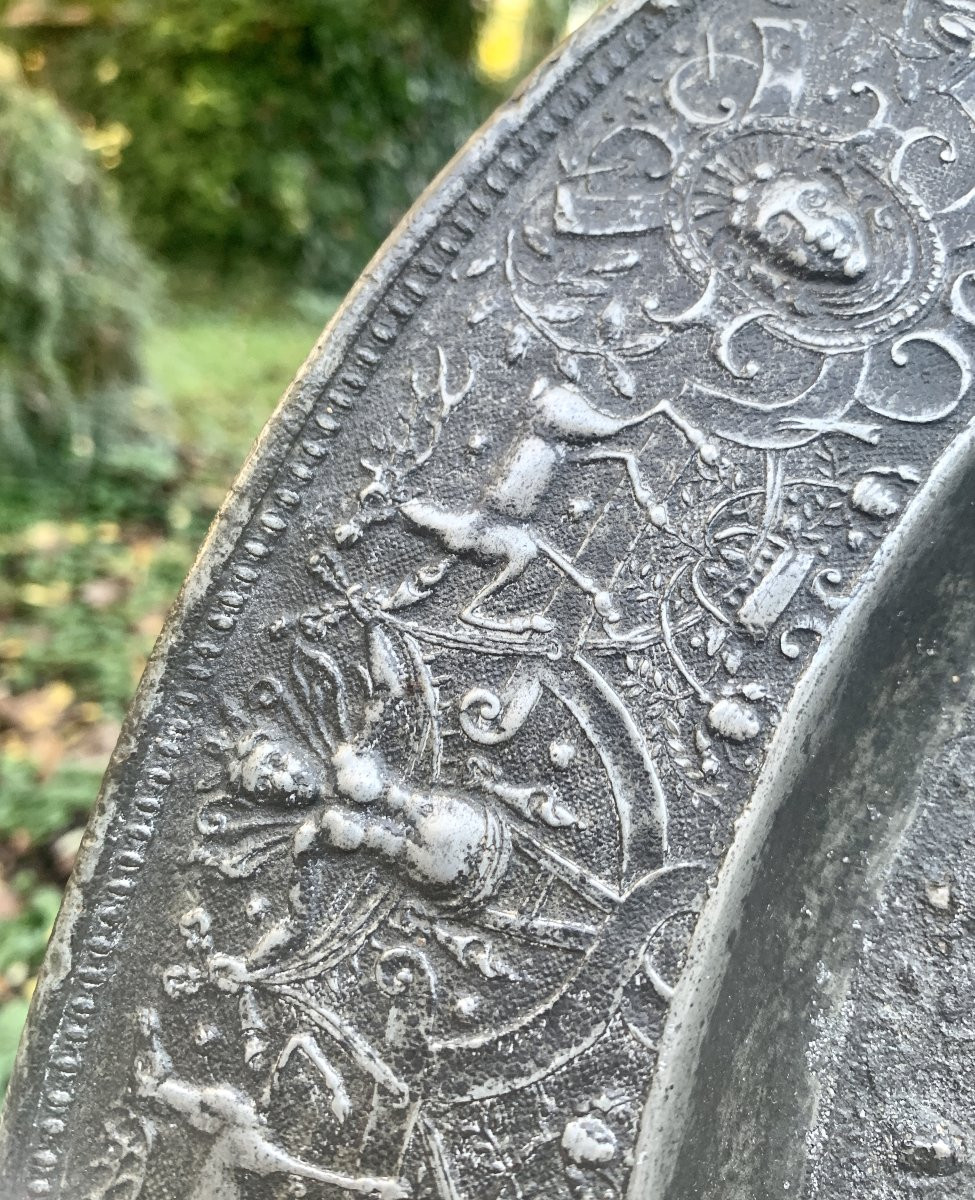
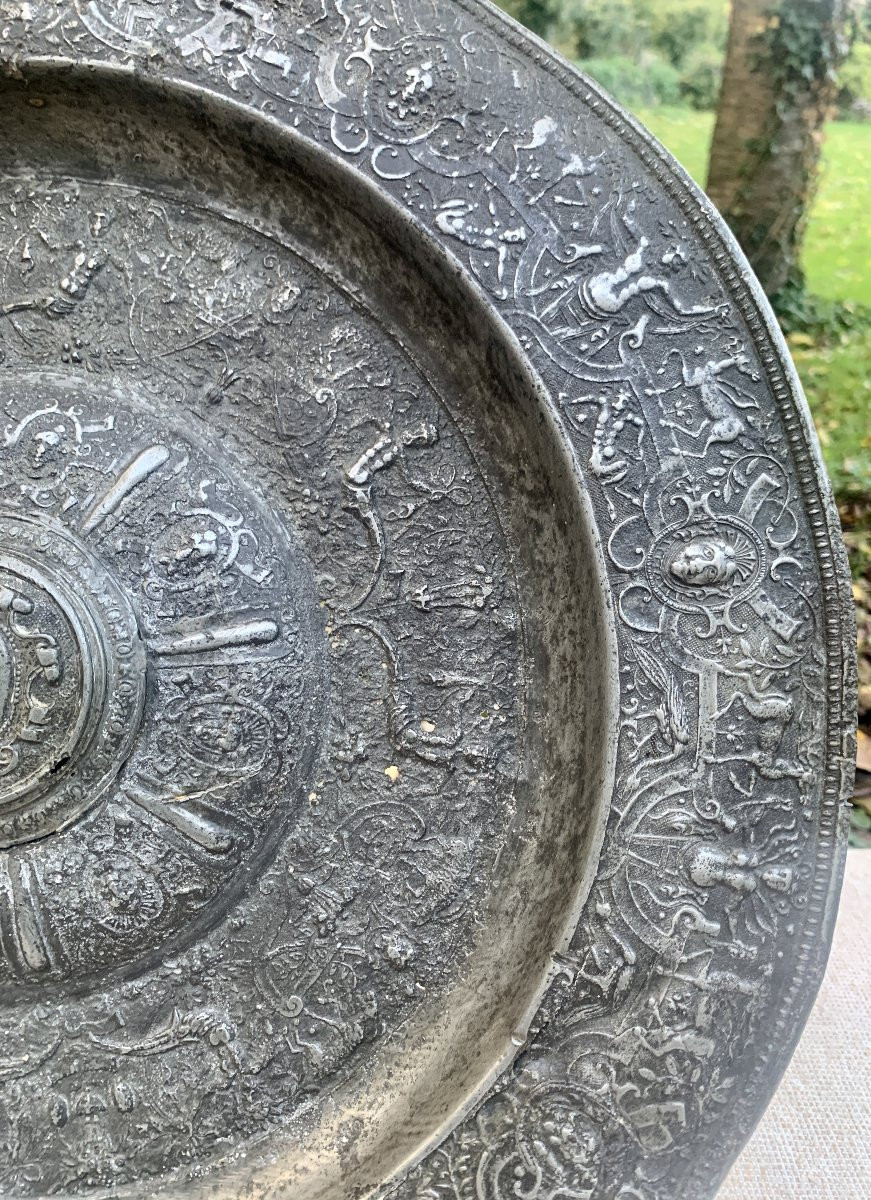


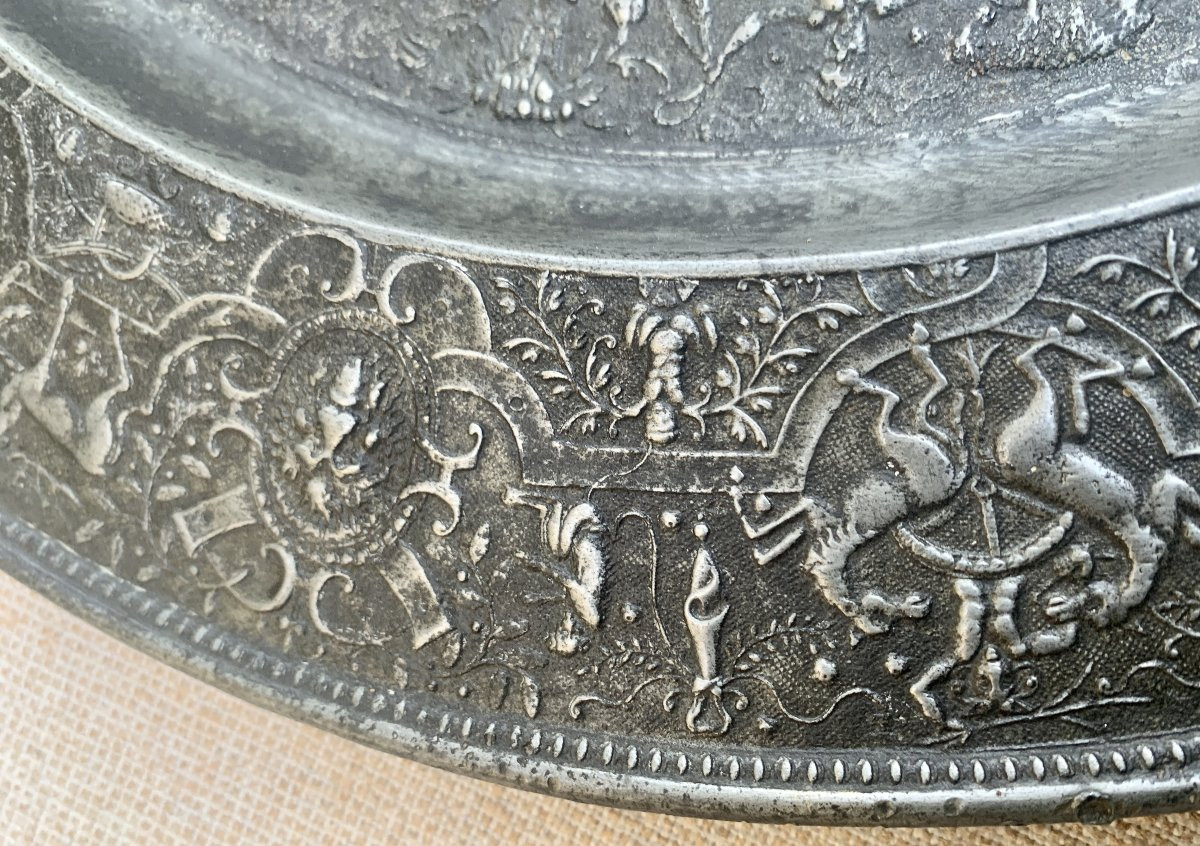
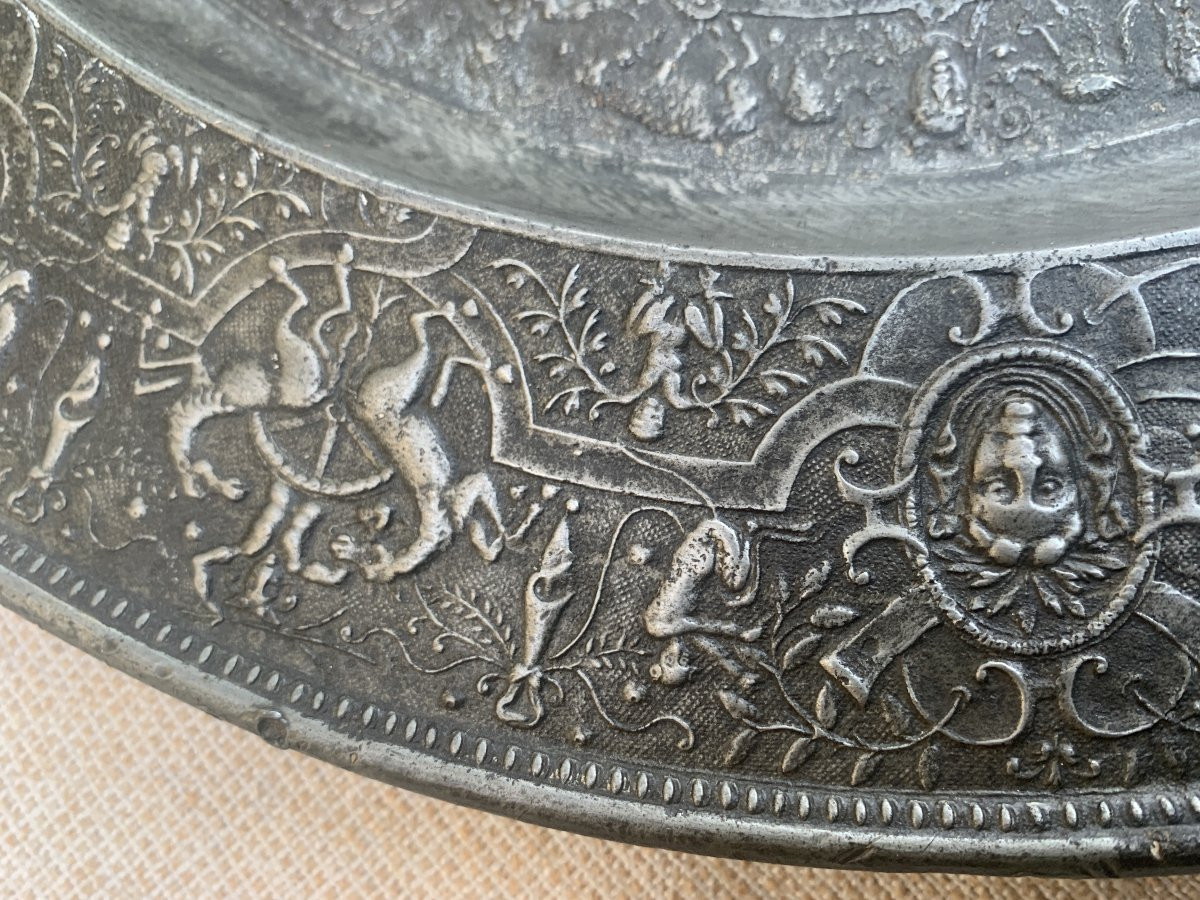




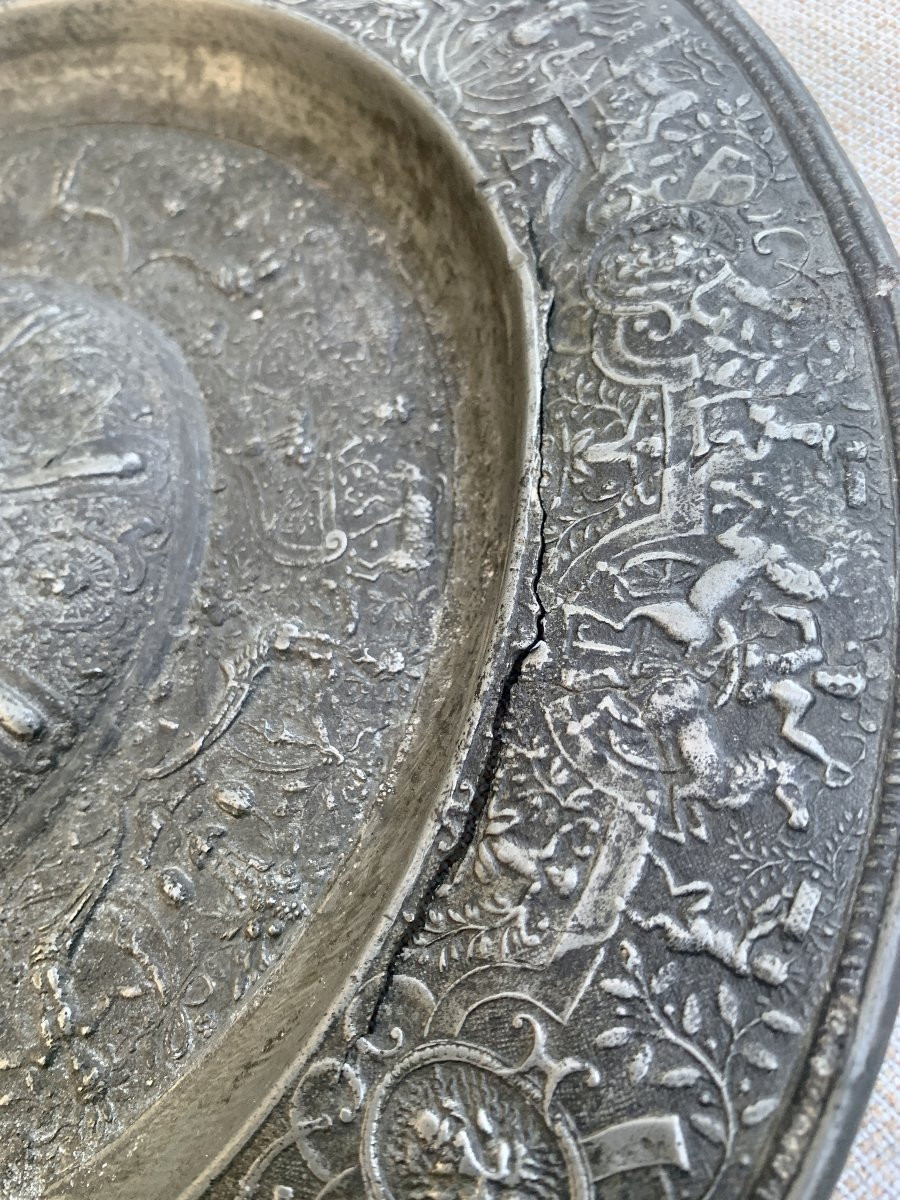













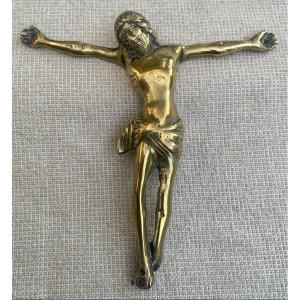







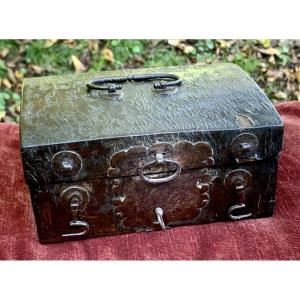





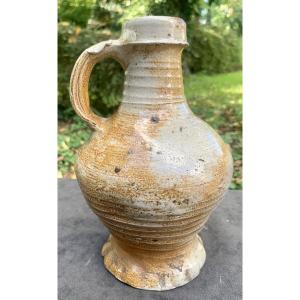

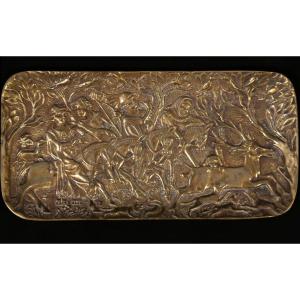

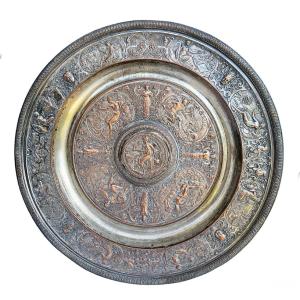



 Le Magazine de PROANTIC
Le Magazine de PROANTIC TRÉSORS Magazine
TRÉSORS Magazine Rivista Artiquariato
Rivista Artiquariato